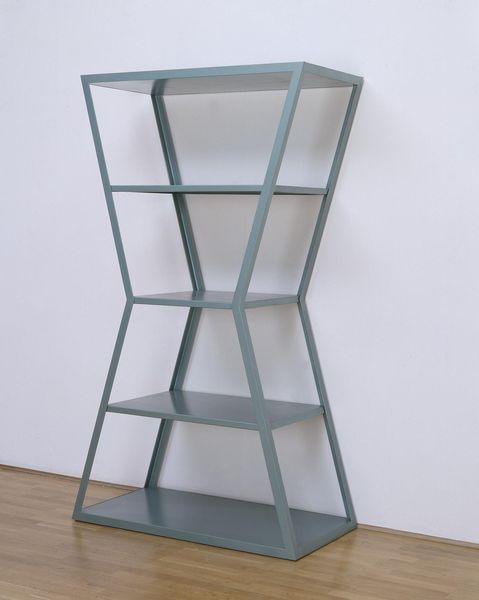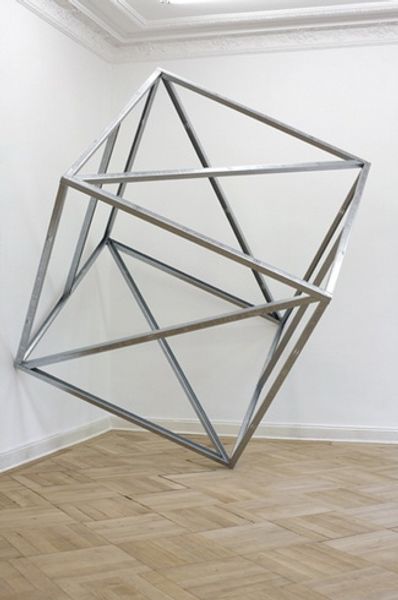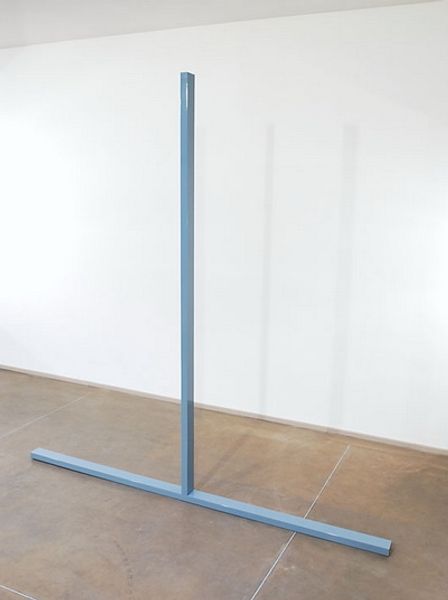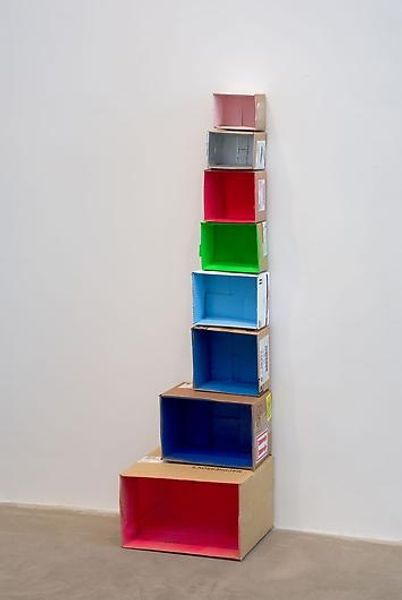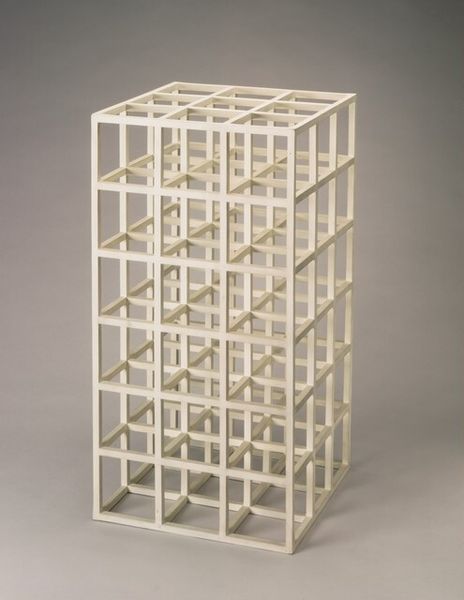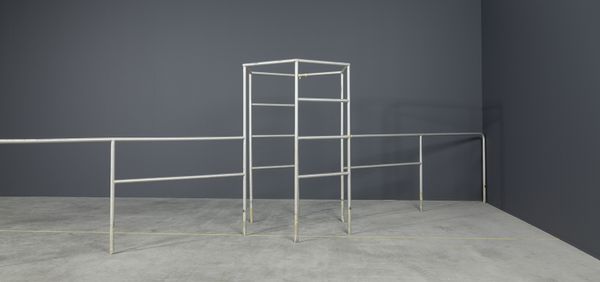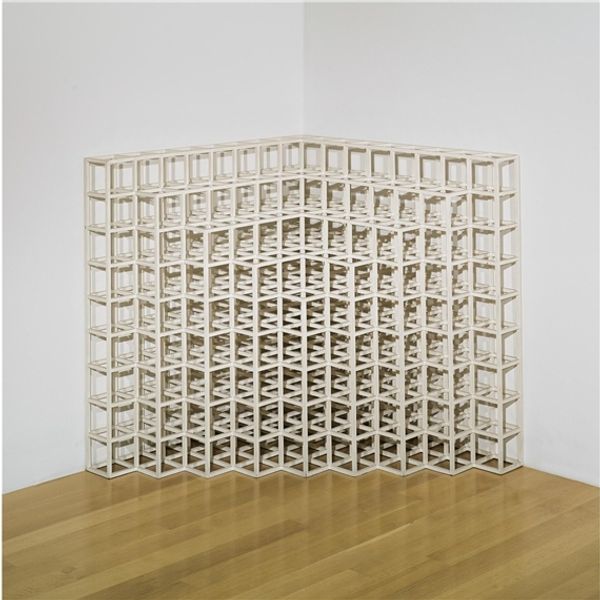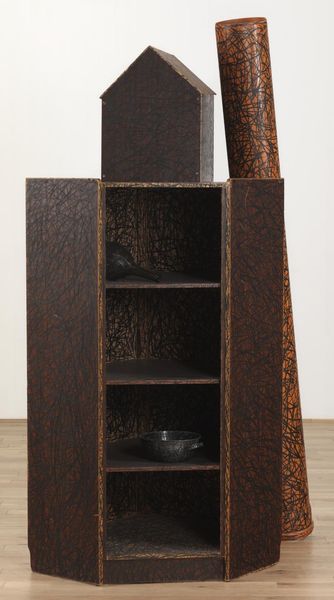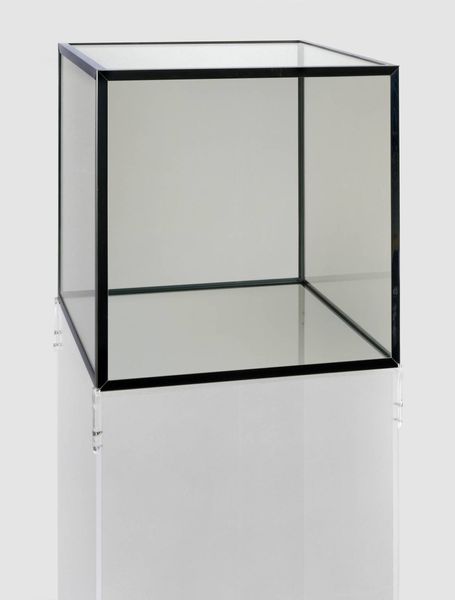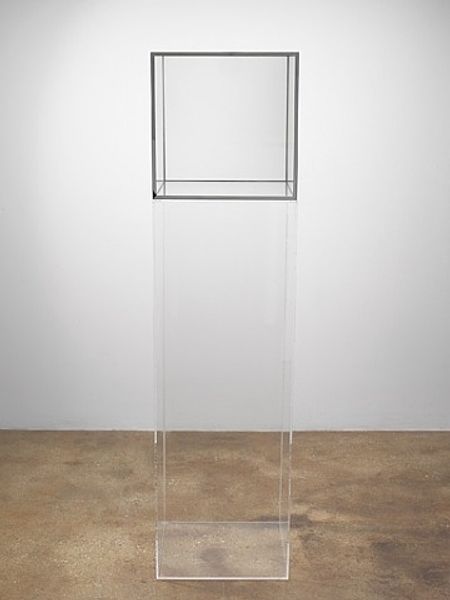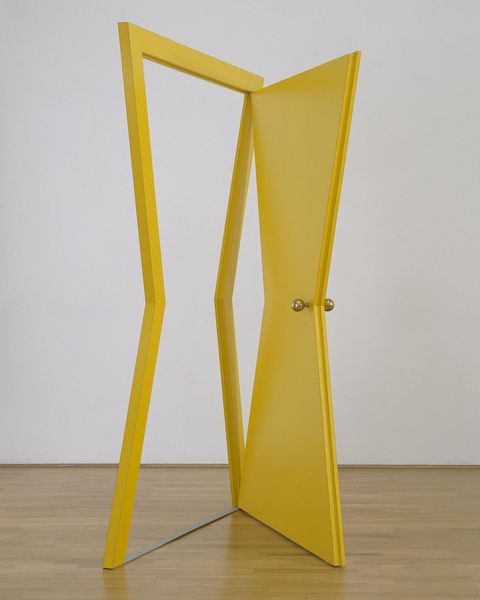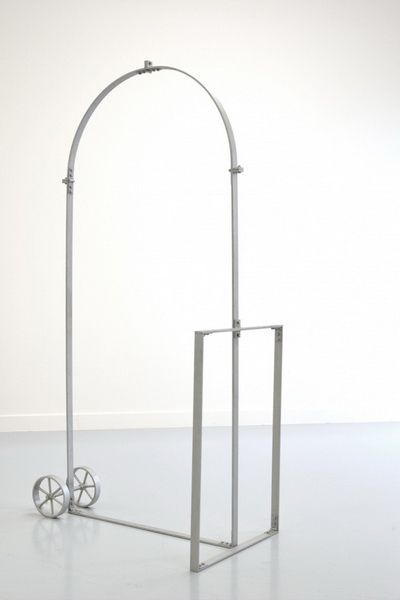
Dimensions: object, each: 2100 x 1200 x 400 mm
Copyright: © Michaelangelo Pistoletto | CC-BY-NC-ND 4.0 DEED, Photo: Tate
Curator: Pistoletto's "Bookcase," currently held in the Tate Collections, is a curious thing, isn't it? I feel immediately drawn to the way it both contains and defies expectations. Editor: It’s all angles and material, isn't it? You can almost feel the labour, the cutting and welding—the way a common object becomes something… other. Curator: Exactly! It’s as if he's asking us to rethink the everyday. Like, what does it mean to display knowledge? What does it mean to contain our stories? Editor: The powder-coated metal takes it somewhere else, too. It’s almost mass-produced, yet the form denies easy function. Is it sculpture? Is it design? It challenges all those categories. Curator: It makes you think, doesn't it? It provokes something beyond the aesthetic. It's a conversation piece, literally and figuratively. Editor: Right. An oddity rendered familiar through material, I love that.
Comments
Join the conversation
Join millions of artists and users on Artera today and experience the ultimate creative platform.
tate 8 months ago
⋮
Bookcase is one of two identical, free-standing sculptures with the same title by Pistoletto in Tate’s collection (T12190–1). Each comprises a floor-standing iron framework supporting five evenly spaced shelves. Together the framework and the shelves form a single unit that takes the shape of a huge, upturned bow. Thus the unit is widest at the top and bottom (the upper and lowest shelves measure 120cm), and narrowest at the centre (the middle shelf measures just over 60cm). It is coated with blue-green metallic enamel paint. T12190 and T12191 are designed to be displayed next to one another against a wall, or at right angles to one another in a corner.
